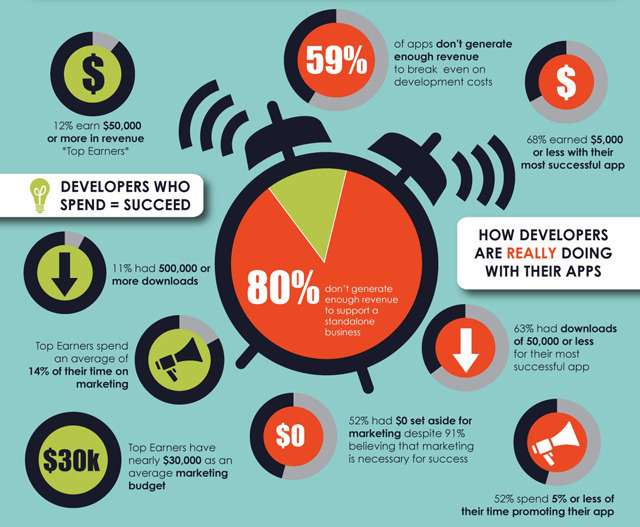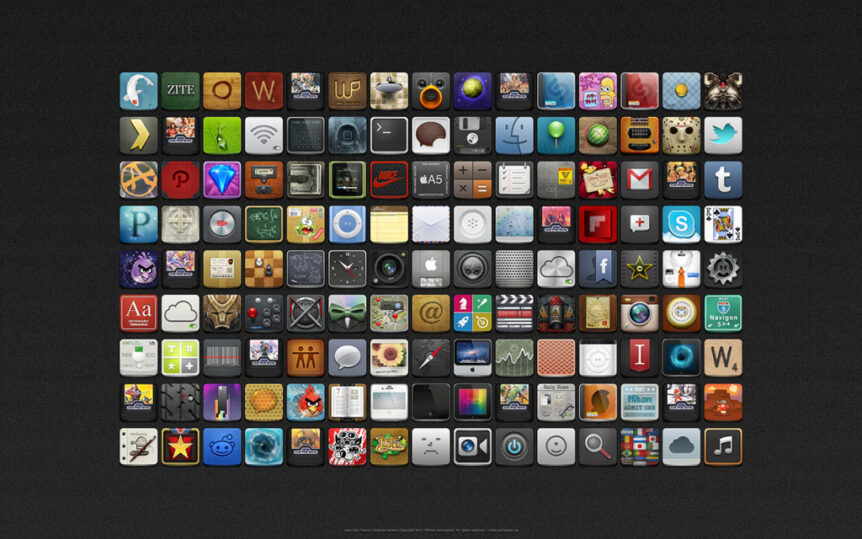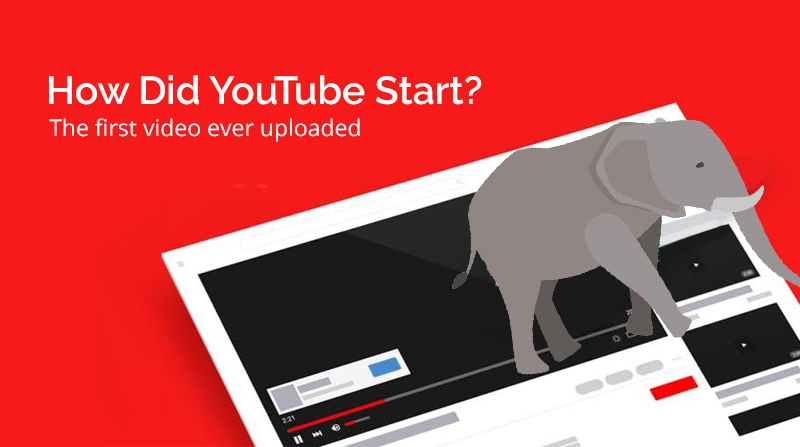There is no shortage of stories about lone developers who made an app for the iPhone or iPad and had runaway success. But in the real world, the majority of app makers struggle to break even, according to a recent survey by marketing firm App Promo. Though the survey’s methodology is a bit on the light side, numerous developers that we spoke to agree that the results—59 percent of apps don’t break even, and 80 percent of developers can’t sustain a business on their apps alone—are close to accurate.
HIGH EXPECTATIONS
Apple often boasts that the App Store offers users hundreds of thousands of apps to choose from. But while the incredible variety may benefit consumers, the mature market can make it more difficult for small developers to get noticed.
“Over the years I have seen visibility of applications I’ve worked on greatly reduced,” developer Pat McCarron told Ars. “Right now your app is likely not going to be found if you never break the Top 100 or Top 200 lists. Users won’t navigate forever down the list of top apps to find yours sitting lonely at the bottom.”
Rogue Amoeba’s Paul Kafasis agreed that the App Store has become more of a lottery, and less a chance for small developers to succeed along with well-established companies.
“The App Store is very much like the lottery, and very few companies are topping the charts,” Kafasis told Ars. “It’s a hit-based business. Much like music or book sales, there are a few huge winners, a bigger handful of minor successes, and a whole lot of failures.”

The App Store offers developers lots of opportunity—for both success, and failure. Picture Credit: App Promo
Some developers even said that App Promo’s assertion that 59 percent of apps don’t break even is a bit on the generous side. Former NetNewsWire developer Brent Simmons suspects the figure is “more like 85 percent,” while Lucius Kwok believes it may “fall in the range of 90 percent or higher.”
Apple encourages practically anyone to try their hand at iOS development. Just $99 per year gives you access to Apple’s developer program, the development tools are a free download, and numerous books line bookstore shelves (both physical and virtual) offering tips to budding iOS developers. While this creates a large developer base for the platform, it also creates a huge group of developers who grossly underestimate the amount of time, effort, and money that can go in to developing a quality app.
“Development costs are generally much higher than folks realize,” Kafasis said. “Making an app still requires tens of thousands of dollars in development, if not hundreds of thousands. Recouping that kind of money 99 cents—or really, 70 cents—at a time is not easy.”
Part of the problem can be attributed to consumer expectations. Whereas $20-30 was not an uncommon price for desktop software created by small developers in the past, the App Store quickly led consumers to expect to pay 99 cents, or maybe $1.99 for most mobile apps. Many more are free, supported with in-app ads or “freemium” in-app purchases.
“Paid apps, despite likely being only $1, is a surprisingly high barrier of entry,” McCarron toldVertical Sight.
Kafasis agreed. “Users still expect quite a lot, even for 99 cent apps,” he said. “Worse, anything over perhaps a couple bucks on iOS is a ‘premium’ price, and you’ll get dinged on the price everywhere, by both users and journalists. That can make it very difficult to recoup costs, let alone turn a profit.”
DISCOVERABILITY, APP DEMOS, AND MARKETING
Another part of the problem is that Apple has done little to change how the App Store works since day one over four years ago. Discoverability is a real problem, and the search algorithms have led some developers to try and “game” the system with SEO techniques like overloading titles, descriptions, and other metadata with keywords.
To illustrate the problem, McCarron noted that his company’s app, Words Play, isn’t even the top result for a search for “words play.” Instead, that top result currently belongs to an app called “Words With Cheats for Friends ~ The Best Word Finder For Games You Play With Words And Friends.”

It’s hard to even be the number one search result when your app name is an exact match for the search terms.
It’s hard to be the number one search result even when your app name is an exact match for the search terms.
Patrick McCarron
“We knew these other results would come up for those words when we chose the name,” McCarron said. “But we assumed since our name is an exact match for the search terms that we’d get slotted in at number one no matter what. Instead, we bounce around the top five randomly, it seems; I haven’t seen us at number one since the week we launched.”
Developers agreed that Apple could improve browsing and discoverability, and the company seems to be making an effort to move in that direction. It recently bought Chomp, a service designed to help navigate app stores for various mobile platforms. Apple recently discontinued Chomp’s Android offerings, so it seems likely that tighter integration with the App Store is coming sooner rather than later.
In addition, Apple still needs to offer some kind of demo mechanism for paid apps. Shareware and commercial software on the desktop benefit largely from time- or feature-limited demos. Though Photoshop costs hundreds of dollars, users can at least download a free 30-day demo to decide if the investment is worth it.
“I’ve hit many places where this would have been useful myself when shopping for an app to do a certain task,” McCarron said. He feels that consumers would be more willing to pay $5, $10, or more for an app if they were convinced it would prove useful after having tried a demo.
Of course, developers themselves could help by more tightly focusing their development efforts. Many developers are encouraged by the App Store’s “lottery” effect to develop several apps in the hopes that one might be a hit, but they could benefit themselves by honing in on apps that perform their intended functions exceptionally well.
“Developers would be better served by investing more strongly in fewer, better apps, trying to build a real business,” Simmons said.
“I think the best answer is to create narrow or shallow apps that do just one thing and do it well,” Kafasis added. “This can result in great, focused apps.” He warned, however, that always taking this approach will leave a gaping hole where apps with greater functionality could be successful. “Deeper, more expensive apps do have a place.”
App Promo’s reasoning behind the survey is to show the benefit of marketing to app success—51 percent of developers didn’t set aside any budget for marketing. The developers we spoke to agreed it was critical to fuel early adoption, which could lead to breaking into the top charts.
“It used to be easier to get away without spending any money on marketing, but now it’s quite hard to make a dent in the market without that,” McCarron said.
“If an app isn’t charting, and it isn’t featured by Apple, the only way users are likely to find it is through the developer’s marketing efforts,” added Kafasis.
Even still, success isn’t guaranteed.
“I think that there’s little correlation between how much time and effort you put into an app and how successful it is,” Kwok told Ars. “My most successful apps were fairly easy to make, but just happened to be in the right market at the right time. The apps I’ve spent the most time and effort on ended up being flops.”
Developer Jonathan Rentzsch had slightly more cynical advice for developers considering breaking in to the iOS market. Instead of going into business for yourself, consider contracting out work to larger companies with big budgets.
“It’s no secret that the money in the App Store is the contracts writing the apps, not in selling the apps themselves,” he said.


